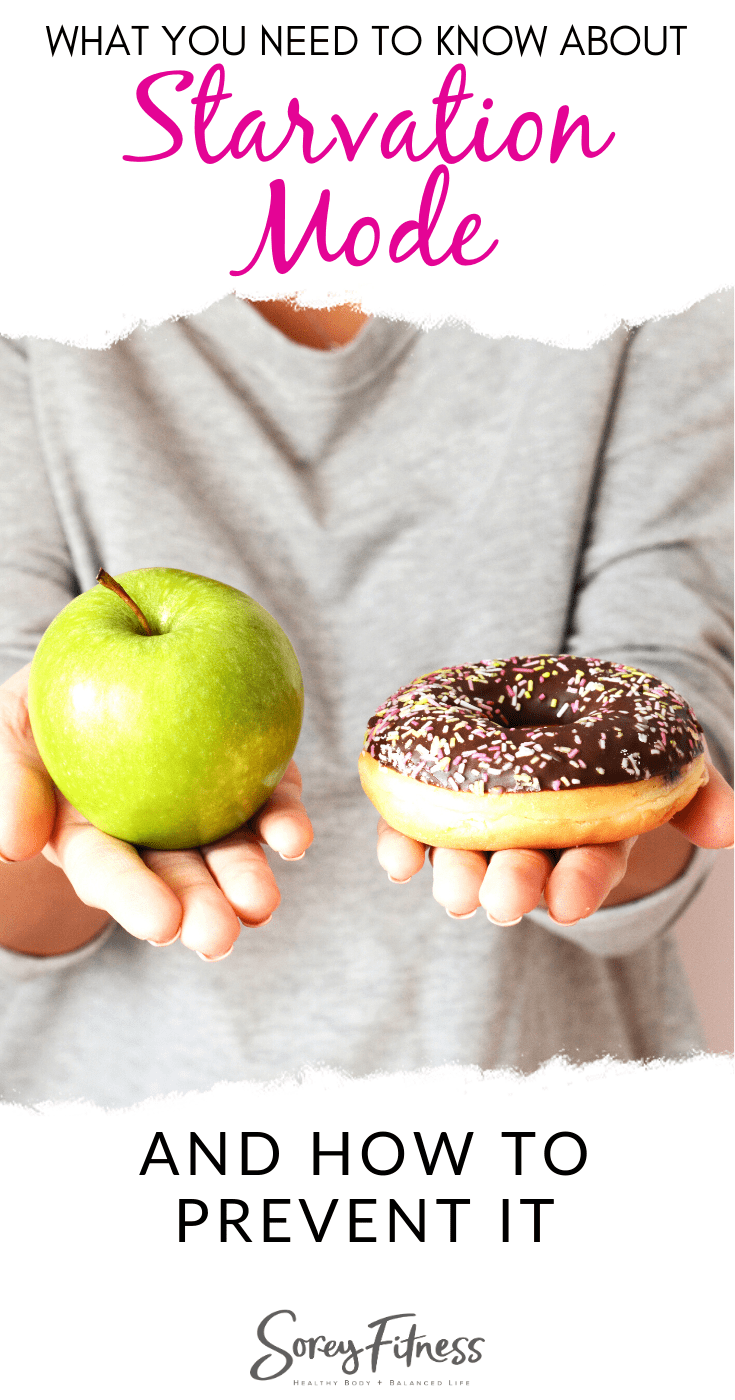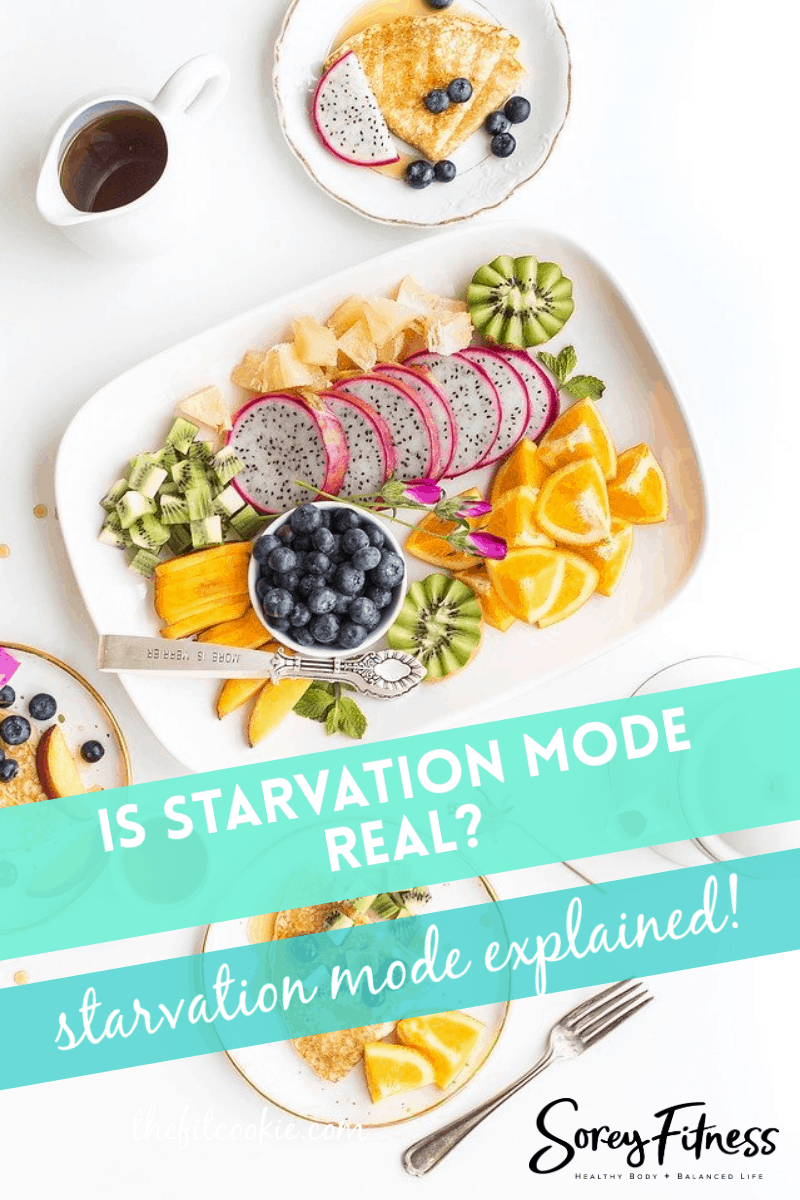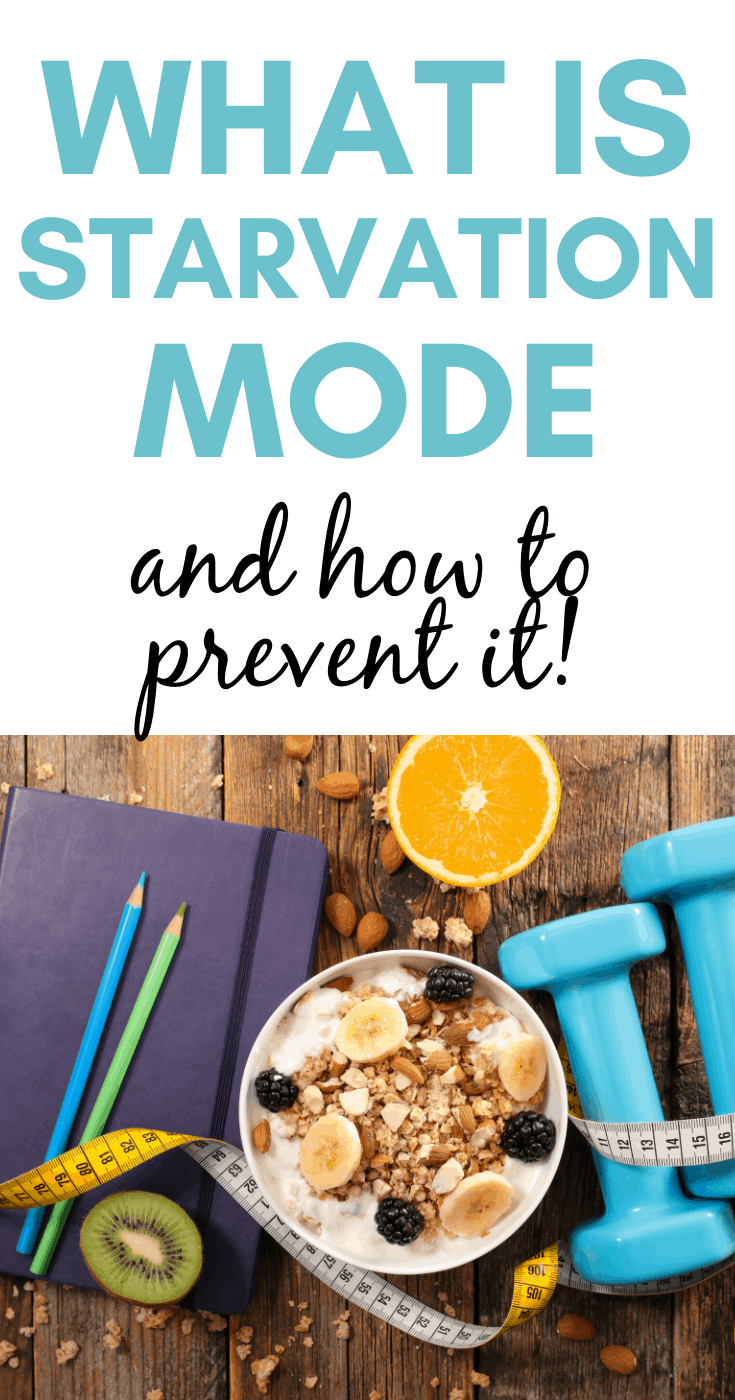Is Starvation Mode Real or a Myth? Find Out Why You’re Really Hungry
This post may contain affiliate links. All opinions shared are my own. As an Amazon Associate I earn from qualifying purchases. Click to view our full disclosure.
Confused about what starvation mode is and if it’s real or not? We explain everything you need to know about it, what causes it (and what doesn’t), and how to prevent it.

Whether you’re new to dieting and weight loss or you’re a veteran nutrition enthusiast, chances are you’ve heard the term “starvation mode” before.
Some people argue that starvation mode doesn’t exist. Others say that it is real and just missing one meal can send you into starvation mode.
In this post, we’ll explain if starvation mode is or isn’t real, what it really is, and how to prevent a metabolic slow-down when you’re losing weight.
Is starvation mode real?
Is starvation mode real? The short answer is yes and no.
Clear as mud, I know, but we’ll clear things up by explaining what starvation mode really means, what causes a drop in metabolism when you diet, and what doesn’t cause it.
What is starvation mode?
The popular definition of “starvation mode” is actually when your body adjusts its metabolism to compensate in various ways for dieting and low calorie intake.
Diet trends fluctuate over the years, and one trend was that if you even missed even just 1 meal, you would go into “starvation mode” and ruin your diet progress.
While a drop in metabolism from chronic under-feeding is real, missing one meal won’t wreck your metabolism or send you into starvation mode.
So the concept of starvation mode is real in that it is a simplified explanation of metabolic changes that can happen to your body, but many of the things that are said to cause it really do not.
We’ll dig into a little bit of the science behind these concepts, but first let’s make a distinction between the diet concept of “starvation mode” and actual starvation.
While starvation mode is a popular topic among dieters and fitness enthusiasts, actual starvation is the wasting away and damage to the body’s tissues due to calorie intake not meeting the basic needs of a person’s body.

We can see true starvation in people with eating disorders (like anorexia or bulimia), people with untreated illnesses, or who are living in poverty or famine conditions.
Most average American dieters will not enter true starvation.
What can cause drops in metabolism?
A reduction in metabolic rate can occur when someone reduces their calories in the extreme (like a long-term 800 calorie diet), but will not occur when someone simply misses a meal, participates in a fast, or does exercise on an empty stomach.
Let’s take a look at what can cause your metabolism to change during a diet.
Leptin, a hormone made by fat (adipose) tissue, reduces hunger signals, acts as a natural appetite suppressant, and helps to manage weight. Significant reductions in calories can cause a drop in leptin serum levels, making you more hungry and slowing your body’s metabolism and weight loss.
In this weight loss study, obese women who reduced calories with more intensity had lower leptin levels than women who reduced their calories more moderately.
A prime example of this is shown by a study of Biggest Loser contestants after their weight loss after the show. The contestants at the end of the show had little to no leptin circulating in their bodies, resulting in constant hunger and slowed metabolism.

Due to the extreme nature of their weight loss, many of these contestants had an eventual regain of some (or all) of the weight that they had lost during the show.
Not only can leptin levels disrupt metabolism with extreme calorie cutting, but basic physics applies to our metabolism as well. The bigger our body is, the more calories it requires for daily living. When our body weight decreases, our caloric needs decreases a bit as well.
Another reason dieting and weight loss can lead to a drop in metabolism is that when we lose weight, a portion of that weight loss is often muscle.
This happens when we’re not being diligent with our protein intake and strength training during weight loss efforts.
Muscle tissue is more metabolically active than fat tissue (it requires more calories to maintain its place in our bodies), thus more muscle loss during weight loss can result in a drop in resting metabolic rate.
Not only that, but chronic hunger and fatigue can also result from long term severe calorie reductions, resulting in less calorie expenditure through activity during daily activity. When you’re fatigued, you won’t move as often or as much resulting in less calories burned each day.

What won’t trigger starvation mode
So extreme calorie reductions can result in reduced metabolism and end up being counterproductive to our efforts to lose weight. So what doesn’t trigger a reduction in metabolism (“starvation mode”) during weight loss?
While we know that extreme diets can lead to reduced metabolism and reduced leptin levels, the flip side is that moderate reductions in calories, a few missed meals, or participating in fasts (religious or health related) will not cause starvation mode and will not result in lasting damage on your metabolism.
In fact, doing some types of fasting can even benefit your body and metabolism.
Fasting in various forms is an integral part of the practice of certain religions. Several studies have been done on people participating in religious fasts such as Ramadan where the fasting is done during the day and food is eaten at night for 29-30 days (so nutrition needs are still being met).
In a study on Ramadan participants, it was shown that total energy expenditure (TEE) wasn’t significantly reduced and there were no metabolic changes long term, although because of the fasting patterns the activity levels and sleep patterns were temporarily altered during the fast.
What about cravings?
It’s also worth noting that when you change your diet and start eating healthier, an intense craving for sweets and sugar does not necessarily mean you’re in starvation mode.
Cravings for sweets during a moderate diet is not an indication of being in “starvation mode”. Cravings for junk food are natural if you have trained your body to expect certain types of foods (like sugary foods), so as long as you’re getting your nutrient needs met, don’t let those cravings make you believe you’re in starvation mode.

What to do instead of extreme diets
So long term under-feeding coupled with over-exercising could cause a drop in our metabolism, so what works for weight loss? Here are some things that work instead of extreme diets:
Moderate calorie reduction
A moderate calorie reduction of about 10-15% of your daily calorie intake is a reasonable amount to create long term weight loss without causing so much of a calorie deficit that your leptin levels will drop. For the average person, this could be around 200-300 calories a day, which is very doable for most people by cutting back on a few high-calorie sugary snacks or drinks.
Just trimming 200 calories a day can result in a 1/2 pound weight loss each week, which might feel slow, it is a sustainable change for the long term.
Learn More About Our Balanced Approach to Eating
Intermittent fasting
Intermittent fasting is another way to manipulate calorie intake without extreme dieting and calorie reduction. And as we’ve mentioned before, types of fasting where you’re still meeting your body’s nutrient needs (like the Ramadan fasts or the Crescendo intermittent fasting method) can be beneficial to your body.

Increasing NEAT activity
NEAT is an acronym that stands for Non Exercise Activity Thermogenesis. This is the daily activity in our lives that isn’t formal exercise. NEAT activity is the daily activity of living.
Adding more NEAT activity to your day is a great way to increase your calorie burning without making huge changes in your lifestyle. It can be walking farther to the store from your car, getting up more frequently from your desk to walk around, using the stairs instead of the elevator, etc.
Reducing loss of muscle mass
Whichever eating plan you choose to help you lose weight, it’s important to make sure that you’re still getting plenty of protein in your diet. You should also incorporate regular strength training to reduce the loss of muscle mass during weight loss efforts.
Paying attention to your macronutrient profile as well as your calorie intake is important for maintaining muscle mass, so make sure that if you’re tracking calories you’re also noting your macronutrient and protein intake (we’ve shared some good macro ratios to start with if you’re new to this).
You may also like:
- Should you do fasted cardio?
- Guide to IIFYM — Using Flexible Dieting and Macros for Weight Loss
- 21 Day Challenge with Meal Plans, Workouts, and Coaching






